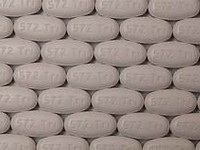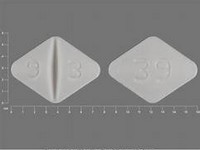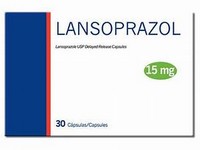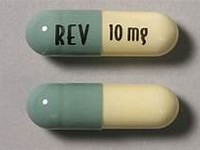Telmisartan
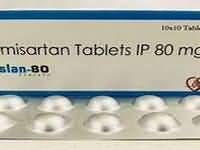
CLINICAL USE
Angiotensin-II antagonist:Hypertension
DOSE IN NORMAL RENAL FUNCTION
20–80 mg daily
PHARMACOKINETICS
Molecular weight :514.6 %Protein binding :>99.5 %Excreted unchanged in urine : <1 Volume of distribution (L/kg) :500 litreshalf-life – normal/ESRD (hrs) :24/Unchanged DOSE IN RENAL IMPAIRMENT
GFR (mL/MIN)
20 to 50 : Dose as in normal renal function 10 to 20 : Dose as in normal renal function <10 : Start with 20 mg and adjust according to response DOSE IN PATIENTS UNDERGOING RENAL REPLACEMENT THERAPIES
CAPD :Not dialysed. Dose as in GFR <10 mL/min HD :Not dialysed. Dose as in GFR <10 mL/minHDF/high flux :Unknown dialysability. Dose as in GFR <10 mL/minCAV/VVHD :Unlikely to be dialysed. Dose as in normal renal function IMPORTANT DRUG INTERACTIONS
Potentially hazardous interactions with other drugs Anaesthetics: enhanced hypotensive effect Analgesics: antagonism of hypotensive effect and increased risk of renal impairment with NSAIDs; hyperkalaemia with ketorolac and other NSAIDsCardiac glycosides: concentration of digoxin increasedCiclosporin: increased risk of hyperkalaemia and nephrotoxicity Diuretics: enhanced hypotensive effect; hyperkalaemia with potassium-sparing diuretics Epoetin: increased risk of hyperkalaemia; antagonism of hypotensive effect Lithium: reduced excretion (possibility of enhanced lithium toxicity) Potassium salts: increased risk of hyperkalaemia Tacrolimus: increased risk of hyperkalaemia and nephrotoxicity ADMINISTRATION
Reconstition
– Route
Oral Rate of Administration
–Comments
– OTHER INFORMATION
Hyperkalaemia and other side effects are more common in patients with impaired renal functionClose monitoring of renal function required during therapy in patients with renal insufficiencyRenal failure has been reported in association with angiotensin-II inhibitors in patients with renal artery stenosis, post renal transplant, and those with congestive heart failure.
See how to identify renal failure stages according to GFR calculation
See how to diagnose irreversible renal disease
Home




